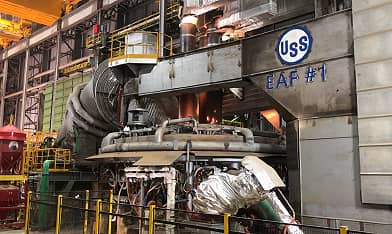After months of speculation about the fate of the American industrial heavyweight, it’s official. According to The New York Times, U.S. Steel agreed on Monday to sell itself to Nippon Steel for $14.1 billion. Nippon’s strategic decision has the potential to reshape the dynamics of the market, influencing everything from supply chains to pricing structures. Today’s #MagnificentMetalMonday delves into the details of this acquisition and explores the potential impact it will have on the metal construction sector.
The Nippon Steel-U.S. Steel Acquisition: A Strategic Overview

Nippon Steel, currently the world’s fourth largest steel maker, has long been a major player in Asia. With a reputation for innovation and high-quality products, the company’s move to acquire U.S. Steel indicates a significant expansion of its global footprint. This acquisition is poised to create a conglomerate with unparalleled resources and capabilities, setting the stage for increased competitiveness and market dominance.
According to Reuters, “The acquisition of U.S. Steel will help Nippon move toward 100 million metric tons of global crude steel capacity, while significantly expanding its production in the United States, where steel prices are expected to rise as automakers ramp up production following their recent deals with labor unions to end strikes.” The deal would add to Nippon Steel’s portfolio of plants around the world, and elevate the Japanese firm to be the world’s third-largest steel maker, after China Baowu Group and ArcelorMittal, according to 2022 production figures from the World Steel Association.
The Hill cites, “High domestic demand for steel, changes in the structure of the global economy, and new U.S. legislation were all cited by Nippon Steel as factors in the deal. Energy and manufacturing industries [will] return to the U.S. under changes in the world economy structure and cheap energy in the U.S. The infrastructure bill and spending is expected to drive steel demand uptick moving forward.”
Two areas of immediate impact of this acquisition is the bolstering of Nippon Steel’s global presence and enhanced technological capabilities. By merging with U.S. Steel, the company gains access to a well-established market in North America, diversifying its geographical reach and reducing dependence on specific regions. Nippon’s superior reputation for technological prowess brings a wealth of expertise and research capabilities to the acquisition.
What is the Potential Impact on the Metal Construction Industry?

The acquisition of U.S. Steel by Nippon Steel is expected to have a far-reaching effect for the metal construction sector. With construction as one of the most important steel-using industries, accounting for more than 50% of world steel demand, some key areas where the impact is likely to be felt will be in supply chain optimization, pricing and market dynamics, and technological advancements.
Executive Director of the Metal Construction Association, Jeff Henry, shares this positive outlook on the acquisition. “The MCA looks forward to the potential of Nippon Steel’s expanded engagement in the construction sector. U.S. Steel has long held a significant presence and has been a strong supporter and partner to the overall construction segment. This continued presence combined with the additional resources and technologies of Nippon will further the industry. Their joint commitment to carbon neutrality will strengthen metal’s position as the most sustainable building material.”
Supply Chain Optimization
With the combined resources of Nippon Steel and U.S. Steel, there is an opportunity for significant supply chain optimization. Improved efficiency in raw material sourcing, production processes, and distribution networks could lead to a more streamlined supply chain which will play a pivotal role in the metal construction industry.
Pricing and Market Dynamics
Market experts will be keeping a close eye on the acquisition as to how it will influence pricing dynamics. One scenario is the increased market share and bargaining power of the merged entity could potentially lead to more stable pricing or even cost reductions for consumers. However, concerns about pricing fairness will likely be closely monitored by regulatory authorities.
Technological Advancements
The infusion of technological expertise from both Nippon Steel and U.S. Steel could pave the way for breakthroughs in construction materials and methodologies. This, in turn, may drive a wave of innovation within the metal construction sector, offering builders and architects access to advanced and sustainable solutions.
The transaction with Nippon is expected to close in the second or third quarter of 2024, subject to regulatory approvals, U.S. Steel said. The Committee on Foreign Investment in the United States, a U.S. panel that scrutinizes deals for potential national security risks, is expected to review the transaction, though most Japanese acquirers complete their deals with few issues.
